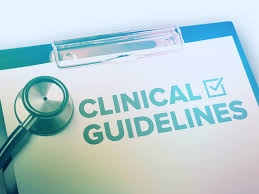
Constitutional impediments and Commonwealth-State rivalry prevent Australia having effective national, corporate regulation.
Order Instructions:
Topic
“Constitutional impediments and Commonwealth-State rivalry prevent Australia having effective national, corporate regulation.”
Is this statement an accurate description of the situation in Australia today? Discuss, in the light of recent reforms to the regulatory scheme and problems which may arise in the future.
Guidelines
The word limit is 2400 words. If the assignment exceeds the word limit by 100 words or less, there will be no penalty. If the assignment exceeds the word limit by more than 100 words, there will be a penalty of half a mark deducted for each extra 50 words or part thereof. Footnotes will not comprise part of the word count nor will a bibliography. If the assignment word count is well below 2400 words (2100 words or less) there will be penalty.
Refer to the Rules concerning all assignments for the circumstances when these penalties may be waived. Remember that the extension to the submission deadline is exception rather than the rule and it can be granted only in exceptional circumstances.
The assignment may cover all unit objectives, though content will vary with the topic selected. In addition to matters developed in more detail below the marker will examine whether you have:
1. identified and clearly stated the relevant issues;
2. applied relevant legal principles to the resolution of these issues;
3. critically analysed deficiencies in the law and recommended appropriate changes to the law;
4. integrated and evaluated relevant knowledge from both the material covered in this unit and your own independent research;
5. developed and sustained a concise and convincing legal argument through to a logical conclusion;
6. correctly referenced and acknowledged sources;
7. fluent, clear, concise writing, not containing poor expression, grammar or spelling; and
8. answered the specific question asked.
It is most important that your assignment address the issues raised in your chosen topic. Think about the topic and make sure you understand what the topic is about before you proceed. Marks cannot be awarded for irrelevant material, no matter how good that material is.
The assignment should contain:
1. an introduction, clearly setting out the broad direction of the assignment, its objectives, any parameters of the assignment, and perhaps a summary of the arguments;
2. presentation of argument, review of literature and compilation of evidence relevant to the topic;
3. conclusion, clearly summarising the arguments or findings;
4. a reference list, setting out all the books, articles and other sources you have referred to in the course of writing the assignment. You need not have necessarily read each reference from start to finish, but you should have at least looked up each reference;
5. accurate citation of your sources of information. Your written material must be presented in accordance with the most recent Australian Guide to Legal Citation (AGLC) adopted by this School (you can download a copy of the AGLC from ).
Students should note the following:
· Many people are not familiar with the requirements of assignments. Basically they are like any other piece of good writing. They must have a beginning, a middle and an end. They must be organised so that one point leads to another in a logical sequence. Headings and subheadings are usually of assistance to the reader, who should be easily able to ascertain the logic of your arguments. You should look at the articles you read in the course of your research as a model for style and organisation.
· Statements of fact must be supported by referencing in the proper form. Also arguments and ideas you are adopting or disagree with must be properly referenced. This is one of the most important aspects of your assignment, and severe penalties will be imposed if you do not reference. Be aware of the University’s and Law School’s rules on plagiarism. You should avoid overreliance on only a small number of sources. You are expected to have read widely on the chosen topic.
· You are expected to employ your critical and analytical skills in this assignment. Avoid mere description or regurgitation and do not quote excessively. Generally speaking, no more than 10% of the assignment should be direct quotes or substantive copying of other people’s work. Both your observations and your use of other people’s writing should reflect this critical/analytical dimension. In sum, your intellectual input should be clearly discernible in the assignment.
· You are not marked for your political or social views or opinions, but rather for your ability to present coherent, rational and logical arguments, properly supported by authority.
· You are also marked for your ability to express yourself clearly, logically and succinctly. Poor expression, grammar and spelling will detract from your overall mark.
· Many students do not also realise that the more drafts of the assignment that are written, the better standard the final product will normally be. You should aim to find the time to complete at least two, if not three, drafts prior to handing the assignment in. This will be especially important in ensuring that the word limit is not exceeded.
Marking criteria
Important information: You are advised to consider the following information carefully before starting your assignment.
The assignment will be marked according to the following criteria.
Research (40%) You are expected to demonstrate a comprehensive review of the primary law sources (legislation, case law) as well as an adequate review of secondary sources (for example textbooks, journal articles, case commentary, explanatory memoranda, Law Reform Commission reports). Your research should be used to identify and clearly state the relevant issues and legal principles and support your analysis.
Analysis (50%) You are expected to analyse the information gathered and evaluate the relevant legal principles. You are expected to develop your argument logically through clear analysis and apply relevant legal principles to the resolution of issue(s). Your analysis should also:
· integrate and evaluate relevant knowledge from the material covered in this unit;
· develop and sustain a concise and convincing legal argument through to a logical conclusion; and
· importantly, answer the specific question asked.
Technical aspects (10%) You are expected to:
· correctly reference and acknowledge sources;
· use fluent, clear, concise writing that contains clear expression, correct grammar, syntax, sentence structure and spelling; and
· use headings and subheadings (where appropriate), an introduction, conclusion and bibliography or reference section.
SAMPLE ANSWER
Constitutional impediments and Commonwealth-State rivalry
Introduction
Australia is otherwise known officially as the Commonwealth of Australia. Australia is a federation of six states and several territories. The country formed a federation in 1901 after the adoption of a new federal constitution and has since functioned as a federal parliamentary democracy under a constitutional monarchy (http://www.asic.gov.au/). The federal system of government formed in 1901 has three branches namely the legislature, the executive and the judiciary. Executive power is vested with the sovereign (the British monarch) who exercises it through the Governor-General (www.comlaw.gov.au). The Governor-General is appointed by the monarch at the advice of the Prime Minister. The Governor-General can dismiss the Prime Minister if there are substantial grounds to do so. The Commonwealth of Australia has a legislature that is made up of a senate and a house of representatives. Each state in the federation has its own state constitution that guides that state’s legislature, judiciary and executive. These state constitutions however are required to be read subject to the federal constitution (www.comlaw.gov.au).
The impact of constitutional impediments and Commonwealth-State rivalry on effective national corporate regulation
The Australian constitution has a lot of safeguards that provide amble space for an effective national corporate regulation. The constitution provides that any state regulation that is inconsistent with any law that has been passed by the Commonwealth parliament is invalid to the extent of that inconsistency. This therefore ensures that no state regulation can be enacted that will hamper or hinder the functions of corporates from other states and free flow of goods and services (http://www.asic.gov.au/). This ensures therefore that all regulation is applicable throughout the commonwealth states without discrimination. The Commonwealth constitution prohibits establishment of taxes and custom duties among states. This ensures that taxes are uniform throughout the Commonwealth and tariffs are also uniformly set by the federal government pursuant to acts of parliaments enacted by the Commonwealth parliament and approved by the Governor-General. The Federal constitution also provides for free trade among states and prohibits any discrimination among states (http://www.uclaw.com.au/home/;
http://www.asic.gov.au/).
According to Chapter IV of the Constitution (sections 81–105A), the constitution contains provisions to regulate trade and commerce throughout the Commonwealth states of Australia. Provisions in the current Australian constitutions enable the country to have a single trade area. The constitution ensures that custom duties are uniform and abolishes protectionist policies between states (MURRAY and PEETZ, 2013). This ensures that corporate regulation is applicable uniformly in all states in the realm. Section 88 of the constitution prohibits state parliaments from imposing custom duties while at the same time empowering the Commonwealth parliament to impose uniform customs duties. The same section of the constitution provides that trade among states in the Commonwealth of Australia shall be completely free. These provisions ensure that national corporate regulation in Australia is effective since it could be applied uniformly in all states (http://www.uclaw.com.au/home/).
The composition of the senate and House of Representatives is drawn from all the states that make up the Commonwealth of Australia. In the event of corporate regulation debate in the Commonwealth parliament each state is able to give its input equally through its elected representatives. Laws enacted must be passed by the senate and must be approved by the Governor-General. The monarch can also set aside a law if it is not in the interests of the national government. All these checks and controls ensure that corporate regulation is effective throughout Australia. The Commonwealth parliament has powers conferred by the constitution to make laws on a wide variety of issues that could impact on corporate regulation (http://www.uclaw.com.au/home/). These touch on taxation, bounties on the production or export of goods, borrowing money on public credit of the federal government, postal, telegraph, telephone, seaways, airways etc. Commonwealth parliament has powers to make banking laws that are applicable in all states. These powers are aimed at making uniform legislation that makes interstate trade uniform, free and fair. National corporate regulation is also anchored on these provisions (http://www.asic.gov.au/).
However, there are some impediments in the constitution that may make effective national corporate regulation impossible to achieve. The first constitutional impediment appears to be in separation of powers between the executive, the legislature and the judiciary. The Constitution in Chapters I, II, and III confer the legislature the power to make laws, confer the executive the power to administer these laws and carry out the business of government through government institutions and confer the judiciary the power to determine legal disputes through established court processes (http://www.uclaw.com.au/home/). There is however no strict demarcation between executive and legislative powers despite the structures set by the constitution. Sometimes the legislature delegates its legislative power to the executive but may thereafter disallow regulations that the executive makes. This causes confusion and is an impediment that prevents the country from having effective corporate regulation (http://www.uclaw.com.au/home/).
The next impediment is that even though the constitution confers power on the Commonwealth Parliament to make laws, this power is limited to particular subjects which include defense, external affairs, interstate and international trade, taxation, foreign trading and financial corporations, marriage and divorces, arbitration, interstate industrial conciliation and arbitration. This limitation places an impediment on the country in making effective national corporate regulation since it excludes such important areas as criminal law, education, environment etc. Some of these important subjects are handled exclusively by state constitutions which may vary depending on the state in focus (http://www.uclaw.com.au/home/). This hinders uniformity and may create confusion in its application. Under the federal system created by the Australian constitution, it guarantees the continuous existence of each state and preserves each of their constitutions. A state parliament is allowed to make laws on any subject whether corporate or not which is specific to that state and this creates an impediment to effective corporate regulation in Australia. This is because each state can modify or add to its existing corporate regulation and thus make it markedly different from what exists in other states. This would create confusion and make corporates undergo different pieces of regulation on similar issues depending on the state they choose to operate in (http://www.asic.gov.au/).
Unlike the Commonwealth parliament, it has been noted that state parliaments can pass a wide range of laws on the subjects of criminal law, education, roads etc. which would impact on corporate regulation in each state differently. It should be noted however that Commonwealth parliament has been regarded generally as superior to state parliaments. According to Section 109 of the federal constitution, if a valid Commonwealth law is inconsistent with a state parliament law then the Commonwealth law is operational and the state law is inconsistent and invalid to the extent that inconsistency (http://www.asic.gov.au/). As far as laws that are made by Commonwealth parliament is concerned, there is no conflict with state parliament laws as a result. The danger arises though where state parliaments make laws on subjects that Commonwealth parliament does not deal with and which have a bearing on corporate regulation. Such laws will impact corporates differently if they are different from one state to the next (TUSHNET, 2013).
Laws touching on corporate regulation have to be approved by the senate and House of Representatives before it is made an act of parliament by the Governor-General. This provides for a lengthy process which may make amending unfavourable acts hard to achieve. Again, state rivalry may work against pieces of legislation drafted by professionals from different states. In situations where legislation is viewed as potentially benefiting corporates from one state and potentially able to give it a big lead in terms of resources, other states might gang up to oppose it even if it is potentially a nice piece of regulation that could benefit Australia as a whole in the long run (http://www.asic.gov.au/).
Actions of the judiciary have also made effective national corporate regulation a mirage. Recent judgments by the High Court have posed a challenge to federal structure of corporate law in Australia. Even though Corporate law in Australia has for many years been viewed as a federal law, it is a widely held view by many legal minds in Australia that corporate law is essentially made of up of laws specific to each state with some federal features. Each state therefore has a distinctive corporate law that has some features from the federation (http://www.asic.gov.au/). The High Court judgement in the case of New South Wales v Commonwealth (1990) 169 CLR 482 necessitated the requirement that states enact their own Corporations Acts but include some aspects of federalism. In this case the High Court considered section 51 of the federal constitution as an attempt to enact Corporations Act that would be applicable nationally. In this case the court held that matters to do with incorporation of companies are not one of the mandates of the commonwealth parliament and the power to deal with such matter lie with parliaments of each state. This judgement made it impossible to have a national corporate regulation (http://www.asic.gov.au/).
An attempt by the Commonwealth parliament to institute national corporate regulation in late 1980’s and early 1990’s (including incorporation of companies) was faced by persistent problems which included lack of a uniform administration by National Companies and Securities Commission and the Corporate Affairs Commissions of each state. It was also felt that the structure lacked adequate national government enforcement mechanisms. This problem led to negotiations between various state governments and the national government which saw each state being allowed to enact its own Corporations Act but required to add several federalizing features. Some of the federalizing features included enactment of the Australian Securities and Investments Commission as the national regulator (http://www.asic.gov.au/). The Administrative Appeals tribunal and the Commonwealth Ombudsman were mandated to be corporate regulators at the federal level. Australian Securities and Investments Commission, the federal police and the Commonwealth director of public prosecutions were given the mandate to investigate and prosecute offences under the various state Corporations Acts. Matters arising under the various state Corporations Acts were to be determined by the federal court. Even though the Commonwealth parliament in the High Court judgment in case of New South Wales v Commonwealth implied that it did not have the power to deal with the incorporation of companies a lot of effort in the form of federalizing features were put in place to have national corporate regulation in place (http://www.asic.gov.au/).
However, the authority of the federal High Court to determine cases involving Corporate regulation was thrown out in the case of Re Wakim (1999) 31 ACSR 99;17 ACLC 1,055 (http://www.asic.gov.au/). In this case the High Court struck down the mandate given after the New South Wales v Commonwealth case which gave federal court cross vesting legislation to determine corporate regulation matters. In the Re Wakim case, the high court held that it was unconstitutional for the Federal High Court to hear such matters as brought forward in this case under Chapter III of the Australian constitution. This position was held despite the fact that all state and commonwealth governments had agreed that the Federal court play a role of determining disputes arising under the State Corporations Acts. After this case state governments had to pass emergency validating legislation that upheld previous judgments made by the Federal court since they stood the risk of being declared unconstitutional and therefore null and void (http://www.asic.gov.au/).
The High Court decision in the Re Wakim (1999) 31 ACSR 99; 17 ACLC 1,055. Case had profound and far reaching consequences. All corporate regulation cases pending in the federal court had to be transferred to their respective state high courts with far reaching financial implications. Many state courts were at a loss as to what jurisdiction still remains with the federal court post Re Wakim case. Expertise which the federal court had acquired over the years was lost after this case. The Re Wakim case is not the only case that proved that constitutional impediments have continued to hamper effective national corporate regulation (RAMSAY, 2000). In the case of Bond v The Queen, the High Court held that the Commonwealth director of public prosecutions had no power to appeal against a state courts sentence for breach of the states corporations Act under the constitution. The only power that the Commonwealth director of public prosecutions, as regards to a sentence imposed for a breach of a state Corporations Act is to initiate and institute prosecutions for such breaches (LI, 2011). Another case in focus is the case of The Queen v Hughes. The high court judgement in this case received extensive coverage by the media. In this case prosecuted by the Commonwealth director of public prosecutions the Federal High Court found that Hughes by obtaining $300,000 from investors had breached the Corporations Act of Western Australia. The high court held that appropriate commonwealth legislation needs to be enacted that will be applicable to all states. Hughes was only able to be prosecuted because he had dealt internationally by investing money in the United States of America (LANSLEY, GIBSON and FOGARTY, 2002).
Conclusion
It is evident by reading the federal constitution that adequate clauses have been enacted which provide for uniform application of corporate laws throughout the states of Australia. The constitution clearly stipulates that states constitutions are to be read subject to federal constitution and any inconsistencies found in state constitutions are to be invalid to the extent of the inconsistencies. There are some clauses that can be misread and misinterpreted. One of which is the separation of powers which does not easily put a demarcation between executive roles and legislative roles (http://www.asic.gov.au/). Some recent court cases have also added into the confusion. The Re Wakim case is one such case in which the prosecutorial powers of the Commonwealth director of public prosecutions were put into curtailed. Several strategies have been advanced to resolve this mess. This includes holding a referendum to amend the constitutions to give the Commonwealth director of public prosecutions powers to initiate and institute prosecutions on breach of state Corporations Act (HUMPHRYS, 2013). The next method is by instructing state courts to refer such corporate regulation cases to the federal court for determination. This referral is allowed in the current constitution and is also tested and tried in the United States of America and found to be workable. The final method would be putting in place a split regulation that separates prosecutorial powers between the state governments and the Commonwealth director of public prosecutions. For instance the state courts could handle mergers, acquisitions, etc whereas the federal court handles cases arising from state Corporation Acts (HUMPHRYS, 2013)
References
HUMPHRYS, E., (2013). THE BIRTH OF AUSTRALIA: NON-CAPITALIST SOCIAL
RELATIONS IN A CAPITALIST MODE OF PRODUCTION? The Journal of Australian Political Economy, (70), pp. 110-129.
http://www.uclaw.com.au/home/
http://www.asic.gov.au/
LANSLEY, A., GIBSON, B. and FOGARTY, M., (2002). Corporate governance in Australia. International Financial Law Review, , pp. 33-38.
LI, Y., (2011). The Relationships of Corporate Governance, Government Regulation and Performance of Small Manufacturing Business in Australia. Rochester: Social Science Research Network.
MURRAY, G. and PEETZ, D., (2013). RESTRUCTURING OF CORPORATE OWNERSHIP IN AUSTRALIA THROUGH THE GLOBAL FINANCIAL CRISIS. The Journal of Australian Political Economy, (71), pp. 76-105.
RAMSAY, I., (2000). States, commonwealth put on the gloves: Challenges to Australia’s federal corporate law. JASSA, (3), pp. 26-29.
TUSHNET, M., (2013). Constitution-Making: An Introduction. Texas Law Review, 91(7), pp. 1983-2013.
www.comlaw.gov.au
We can write this or a similar paper for you! Simply fill the order form!












